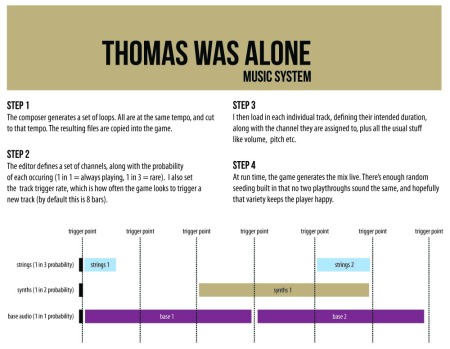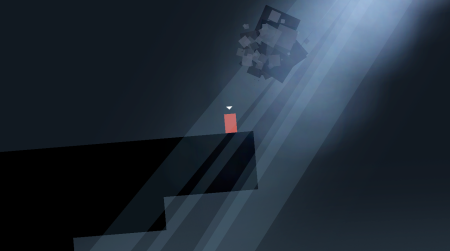Hello.. anyone still here?
So yeah, there’s a big debate this week about greenlight’s $100 fee. I thought I’d come on here and type up my fully formed opinion, because I continue to put my foot in it on twitter. I think others are saying far wiser and more interesting things on the subject, but I want to put my own opinion up, then shut up..
FULL DISCLOSURE: I am a full time Lead Designer at a social games company by day. This is a full time job, and therefore gives me a wage. I’m by no means loaded, but I do not rely on my indie games for my income. Instead, I spend most of my free time making games like Thomas Was Alone, then selling direct, and via other people’s portals. I do modestly well, I couldn’t survive off it, but it sufficiently funds my projects. I have made more than $100.
The thing that freaks me out here is the class aspect. I could understand criticisms of whether this is a good way to stop spam (I’m on the fence) but the idea that reactions to this problem define my economic politics, standing or class makes zero sense to me. I’ve said as much on twitter, to a resounding chorus of ‘aha, that’s EXACTLY what a rich person would say’. I’ve even had some criticism for using crowdfunding (my only alternative to getting a bank loan to make Thomas what I wanted it to be).
But I don’t get it. And I refuse to let my liberal shame make that the end of it for me. I think this opinion needs to be challenged. My opinion can be summarized with the following statement:
You have the right to choose to put your game on Steam or to not put your game on Steam. If you are in the developed world, you can earn $100 on top of your existing income by taking two days off from indie development and doing a temporary, minimum income job. You shouldn’t though, because shelf stacking sucks. You should instead use an equivalent to steam with no barrier (Desura, Indiecity, Indievania) to sell your game. From that money, reinvest $100 in taking a punt on Steam, if you think it’s worth it. Or don’t. There are plenty of financially successful games which are not on Steam.
I thought this was how selling stuff works.. You make something, you sell something, you use some of the money earned to sell more. I wanted a well composed soundtrack. I wanted professional VO. These things cost money, and I decided to take a personal financial risk against the hope of making money at release (crowdfunding didn’t cover everything, I still had to take on some debt, now paid off through sales).
The last part also seems an issue. People are acting like Steam is the only place to sell games. Tell that to Notch. If you don’t like a service, don’t use it… that’s how I’m single handedly bringing down the meat industry (just you wait and see). Does Steam owe us all exposure? Should they support games they don’t think are financially viable?
If you’ve genuinely got an incredible, potentially lucrative game, but not $100 you are in fact very lucky. You’ve been born in a time where that presents zero blockage. Use crowdfunding. Sell direct. Send it to one of the successful indies who’ve offered their help. There is no shame in needing help. If asking is a problem for you, it’s your pride, not class. I sent begging emails asking for talented folks to help on Thomas, I got discounts on everything by waving the indie flag. People are always happy to help, if they believe in the idea.
Why complain? Why react aggressively to well meaning nerds on twitter? Be a part of the solution.. No one is stopping your awesome game from being out there, financially successful and critically liked. It’s hard. But we chose this. We chose to make games outside of established businesses. Our creation of games against the odds is a badge of honour.
Oh, and feel free to go help me pay for the next game by buying Thomas at thomaswasalone.com
Thanks for reading.

